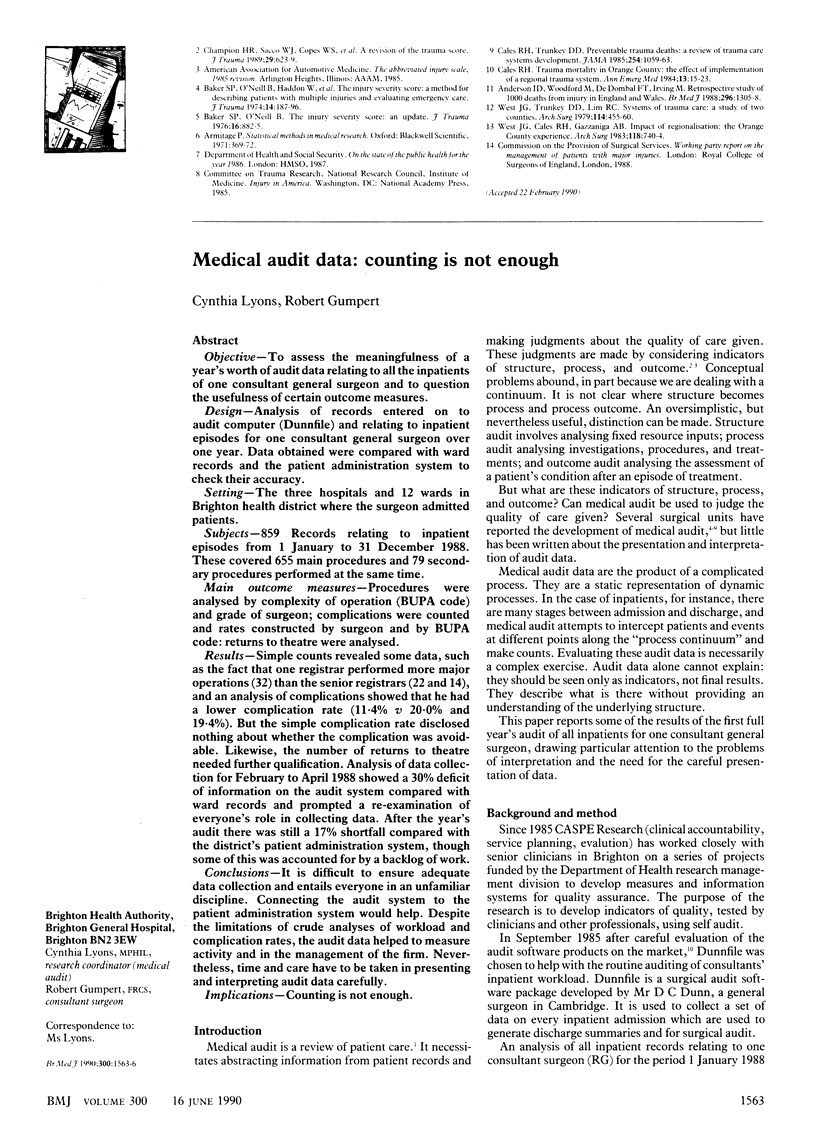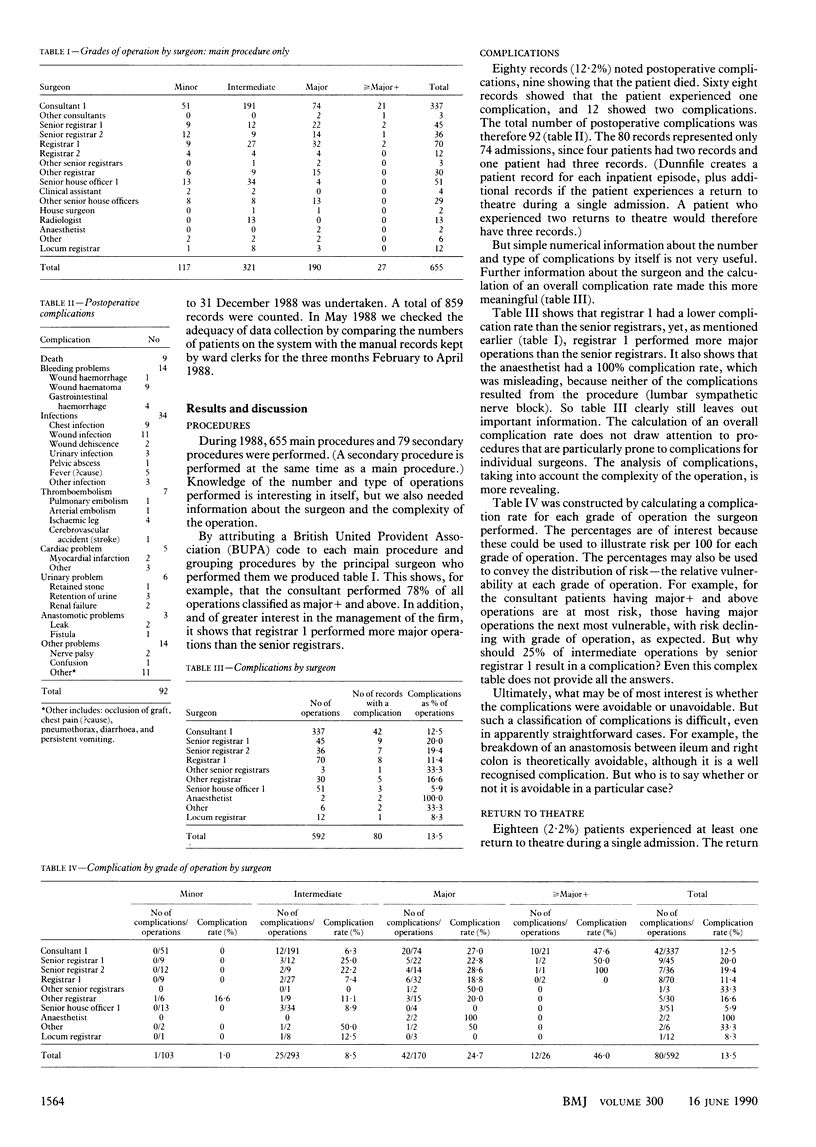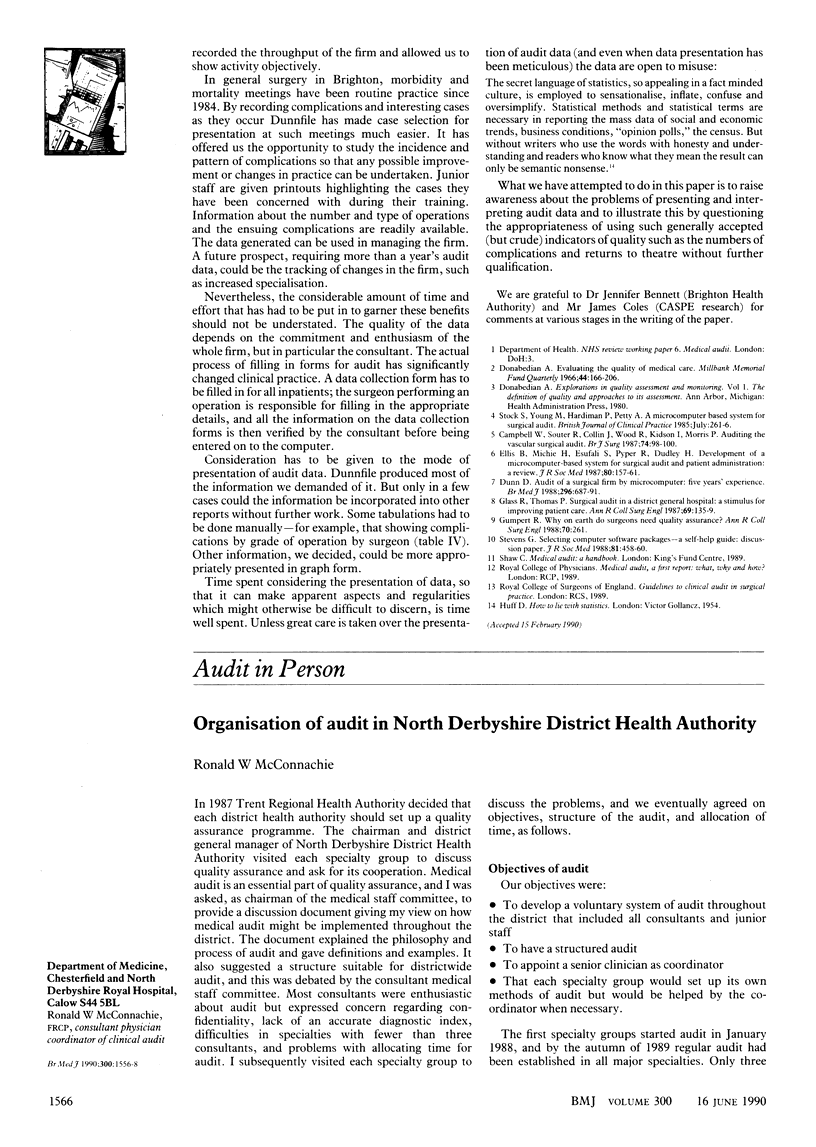Abstract
OBJECTIVE--To assess the meaningfulness of a year's worth of audit data relating to all the inpatients of one consultant general surgeon and to question the usefulness of certain outcome measures. DESIGN--Analysis of records entered on to audit computer (Dunnfile) and relating to inpatient episodes for one consultant general surgeon over one year. Data obtained were compared with ward records and the patient administration system to check their accuracy. SETTING--The three hospitals and 12 wards in Brighton health district where the surgeon admitted patients. SUBJECTS--859 Records relating to inpatient episodes from 1 January to 31 December 1988. These covered 655 main procedures and 79 secondary procedures performed at the same time. MAIN OUTCOME MEASURES--Procedures were analysed by complexity of operation (BUPA code) and grade of surgeon; complications were counted and rates constructed by surgeon and by BUPA code: returns to theatre were analysed. RESULTS--Simple counts revealed some data, such as the fact that one registrar performed more major operations (32) than the senior registrars (22 and 14), and an analysis of complications showed that he had a lower complication rate (11.4% v 20.0% and 19.4%). But the simple complication rate disclosed nothing about whether the complication was avoidable. Likewise, the number of returns to theatre needed further qualification. Analysis of data collection for February to April 1988 showed a 30% deficit of information on the audit system compared with ward records and prompted a re-examination of everyone's role in collecting data. After the year's audit there was still a 17% shortfall compared with the district's patient administration system, though some of this was accounted for by a backlog of work. CONCLUSIONS--It is difficult to ensure adequate data collection and entails everyone in an unfamiliar discipline. Connecting the audit system to the patient administration system would help. Despite the limitations of crude analyses of workload and complications rates, the audit data helped to measure activity and in the management of the firm. Nevertheless, time and care have to be taken in presenting and interpreting audit data carefully. IMPLICATIONS--Counting is not enough.
Full text
PDF



Selected References
These references are in PubMed. This may not be the complete list of references from this article.
- Campbell W. B., Souter R. G., Collin J., Wood R. F., Kidson I. G., Morris P. J. Auditing the vascular surgical audit. Br J Surg. 1987 Feb;74(2):98–100. doi: 10.1002/bjs.1800740208. [DOI] [PubMed] [Google Scholar]
- Donabedian A. Evaluating the quality of medical care. Milbank Mem Fund Q. 1966 Jul;44(3 Suppl):166–206. [PubMed] [Google Scholar]
- Dunn D. C. Audit of a surgical firm by microcomputer: five years' experience. Br Med J (Clin Res Ed) 1988 Mar 5;296(6623):687–691. doi: 10.1136/bmj.296.6623.687. [DOI] [PMC free article] [PubMed] [Google Scholar]
- Ellis B. W., Michie H. R., Esufali S. T., Pyper R. J., Dudley H. A. Development of a microcomputer-based system for surgical audit and patient administration: a review. J R Soc Med. 1987 Mar;80(3):157–161. doi: 10.1177/014107688708000311. [DOI] [PMC free article] [PubMed] [Google Scholar]
- Glass R. E., Thomas P. A. Surgical audit in a district general hospital: a stimulus for improving patient care. Ann R Coll Surg Engl. 1987 May;69(3):135–139. [PMC free article] [PubMed] [Google Scholar]
- Stevens G. Selecting computer software packages--a self help guide: discussion paper. J R Soc Med. 1988 Aug;81(8):458–460. doi: 10.1177/014107688808100814. [DOI] [PMC free article] [PubMed] [Google Scholar]
- Stock S., Young M., Hardiman P. J., Petty A. H. A micro-computer based system for surgical audit. Br J Clin Pract. 1985 Jul;39(7):261–266. [PubMed] [Google Scholar]


